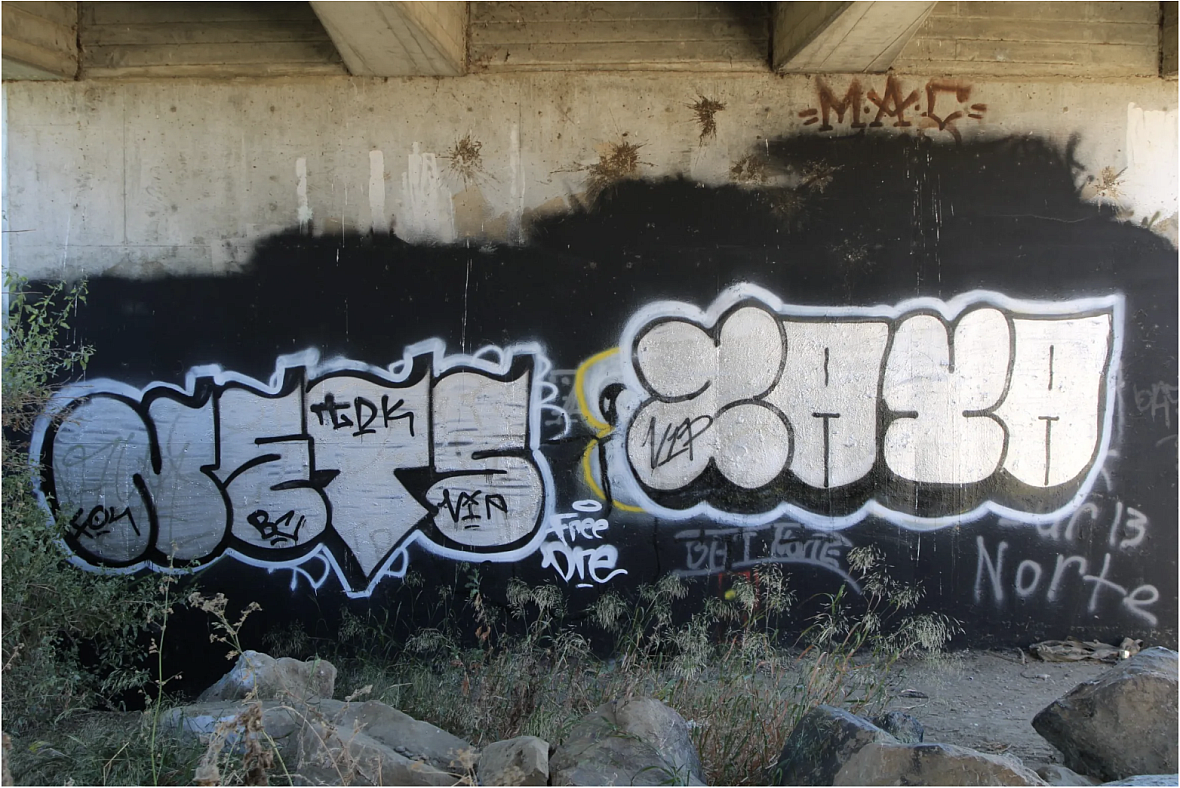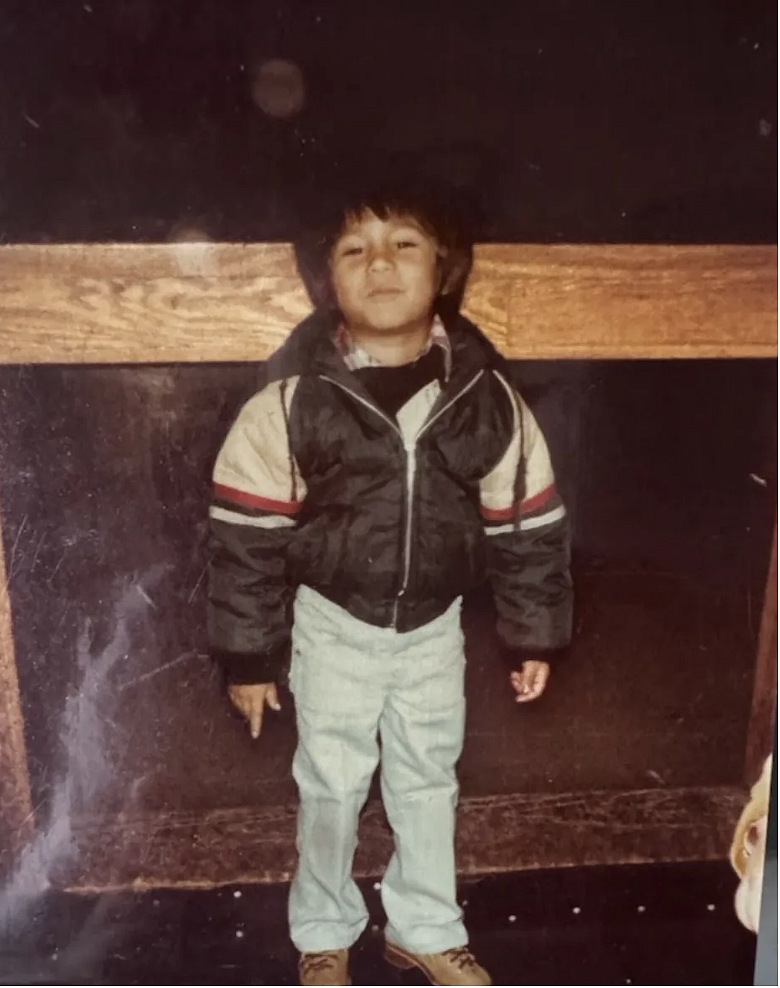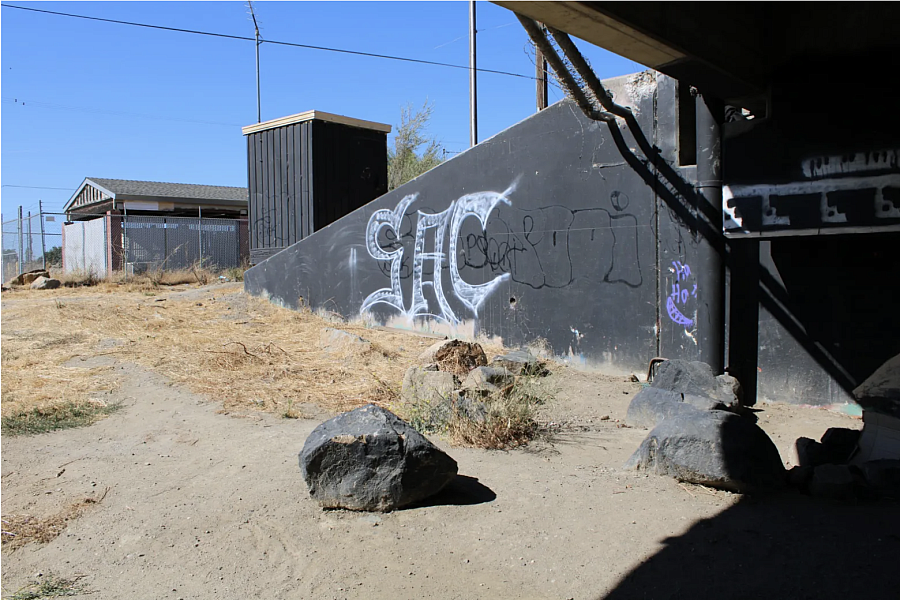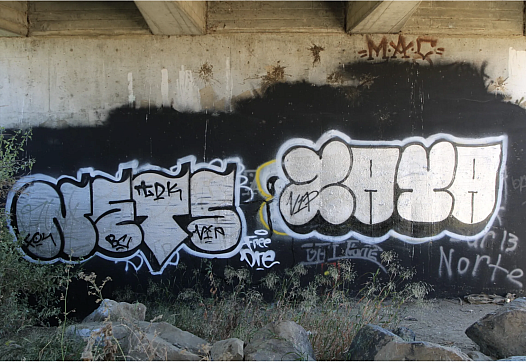Special report: Why do young people in San Benito County join gangs?
The story was originally published by BenitoLink with support from our 2024 California Health Equity Fellowship.

Hollister gang related graffiti with a reference to "norte", which is short for nortenos one of the gangs in the area.
Photo by Jenna Mayzouni
Throughout his childhood, Michael Salinas recalls, he was a straight A and B student living with his mother and grandparents. His mother, balancing single parenthood with work and her own education, left most of the child-rearing to her parents. While his mother loved him, he says, she had one major rule: If she ever caught him stealing, she would report him to the authorities.
In the sixth grade at age 11, Salinas recalls, he met a classmate a few years older and started hanging out with a different group of kids. He made other older friends who were affiliated with gangs in Gilroy. They had sought him out as a recruit, Salinas says, and he started to enjoy his rebellion and a newfound reputation. He started skipping school to hang out in the neighborhood.

Young Michael Salinas.
Photo courtesy of Michael Salinas
“They were a crowd that was older than me,” Salinas, now 49, says, “and I believe they taught me things a normal 11- or 12-year-old shouldn’t know, and shouldn’t know how to do.”
Salinas says after he stole a camera off a motorcycle, his mother reported the theft to police. He was sent to juvenile hall. Following this initial incarceration, he was imprisoned on and off—because of his involvement in gang activities—for the next two decades.
‘On this new path’
Michael Salinas’ story is one example of the largely unaddressed problem of gang recruitment in suburban and rural areas. According to the American Academy of Child and Adolescent Psychiatry, most gang members tend to be adolescents or young adults, with many being recruited at earlier ages. Traditionally viewed as being confined to cities, gangs also exist in small towns and rural regions.
When he was last released from prison in 2013, Salinas decided that he wanted something different.
“I had it in my mind that it was already over,” he says, referring to his life of crime. “I started that thinking while in custody. I started diving into recovery and education and I had it in mind that I was on this new path.”
He says he sought help from his probation officer, who connected him with San Benito County’s Behavioral Health office. Salinas entered the county’s substance use disorder treatment program.
It was there that he turned his life around and decided to get involved in the behavioral health field himself. After working several years for San Benito County and Monterey County, Salinas started the nonprofit Youth Recovery Connections, a nonprofit in San Benito County that helps youth with substance abuse and recovery.
Survey of local youths
A survey was conducted with 10 San Benito County youths who were deemed at risk, or who reported being recruited by or participating in a gang, or who had been previously incarcerated in the county.
All 10 knew of gangs in their communities before reaching age 15. Four of those surveyed reported having friends who became involved with gangs between ages 11 and 15.
The 2023 CalGang Annual Report from the California Attorney General’s Office says the state had files open for 19,146 gang members between October 2022 and September 2023. The report shows 172 gang members between ages 13 and 17, and 6,867 between 18 and 30.
Moises Rodriguez, a child and adolescent psychologist at Children’s Hospital Los Angeles, says he believes the focus on gang violence has villainized many at-risk teens and placed a larger social stigma on them.
“They think that the person we see before us, their mask, represents all of who they are. And the mask that I’m talking about could be whatever is regional to an area in terms of gang attire, and presence, and let’s say face tattoos or something like that.”
Rodriguez wants people to see youth involved with gangs in a different light. “You know, I’ve worked with individuals who have that history, or even current affiliation, and they’re intelligent,” he says. “They have a sense of humor, they have other interests, they have other stuff that they could talk to you about.”
As California attempts to shift from a punitive prison model to a rehabilitation-focused one, there is a growing number of health professionals, advocates, policymakers and formerly incarcerated people across the state devising alternative pathways to help those who are incarcerated.
A report from the Justice Policy Institute, a nonprofit dedicated to reducing incarceration, cited the availability of drugs in a neighborhood, pro-violence attitudes, and family instability as reasons why young people join gangs.
Rodriguez says that in working with youth who have been in gangs or incarcerated, the most common factor was “some kind of disrupted attachment—some kind of challenge with the primary caregiver in the initial environment.”
He says that could be parental neglect, a history of trauma, or substance abuse issues.
Or, as one BenitoLink survey member, a 17-year-old female, says: “People don’t understand people’s childhoods. There are a lot of factors, frustrations and obstacles in their life.”
Based on BenitoLink’s survey, the most common reason for joining a gang was a desire for community and belonging.

Gang related graffiti in Hollister.
Photo by Jenna Mayzouni
One survey participant, a 16-year-old female, says what people don’t understand about gang life is that “it’s not just a gang, it’s family.”
An 18-year-old male respondent, regarding the positives of joining his gang, says that “it brings out the community.”
Salinas says he sees this rationale a lot in his work at Youth Recovery Connections.
“I think that sense of belonging, a sense of brotherhood, camaraderie—just being able to know that ‘you got my back and I got your back and we’re in this together,’ felt like that is what it’s supposed to be.”
It’s ‘something to do’
Other survey participants mention being affiliated with gangs because of their family’s involvement. An 18-year-old female participant says she had been recruited by older siblings.
Some, including Salinas himself, by his own admission, join gangs to make money via illicit means. And some enjoy being perceived as “cool” by peers.
Other factors include sheer boredom and what is claimed to be a lack of easily accessible recreational opportunities for teens in the area.
A 17-year-old female, currently on parole for driving under the influence, says, “You can only go to the movie theater so many times before you are bored.”
Salinas observes a similar pattern from his work with Youth Recovery Connections. He says that for teenagers in Hollister, the only places he knows of that cater to their needs are the Hollister Skate Park and local movie theaters. He says he knows of no other spaces designed for their social and recreational needs.
“Kids who are already aiming at that lifestyle are going to dive right in,” he says, “because it gives them something to do.”
A large factor that plays into young people staying in gangs in San Benito County is the challenge of leaving, especially given the social stigma associated with gangs and the challenge of finding the resources to help them leave.
A Justice Policy Institute report states that most youth “will outgrow their gang fascination, and most will do so in a year or less. And many will meet hostile treatment from social institutions that refuse to accept their status as former gang members.”
While he was in the system, Salinas says, he continuously heard negative comments from his correctional and probation officers. He recalls that, upon his release, they said things like “It won’t be long” and “We’ll keep your bed warm for you.”
“At that point in my life I had kind of just accepted it,” Salinas says. “Throughout this time you are going in and out of juvenile hall, you are seeing a lot of the same staff, same people. And people start to begin to say things like, ‘Man this is your life, this is going to be the rest of your life. You’re going to be in jail or dead.’ And once a person gets told something so much they start to believe it. And I believed and started settling with the idea that this is my life.”
Encounters with law enforcement
A 17-year-old female survey respondent, who is currently on parole with the county’s Probation Department, shares her experiences with the San Benito County Sheriff’s Department and other law enforcement.
“The first time they see you, they are nice and ask questions,” she says, “but once the sheriffs see your face a lot, they start liking you less and less. They see you and automatically assume you are guilty.”
Her encounters with the Sheriff’s Department became more tense over time, she says. “I have had situations where they have pulled the cuffs tighter when I asked for them to be looser. It left cuts on my wrists.”
Five out of 10 survey respondents say they have had negative experiences with police departments in San Benito County.
An 18-year-old female survey participant says police in the county “always go 10 times what they should.”
While she generally has had respectful experiences with the Hollister Police Department, this young woman tells about being pulled over while driving under the influence. She says that when the officers placed her in their vehicle, they thought she was too intoxicated to understand them and started making references to her arrest saying, “We have a Dewey [DUI].” She says the officers told her that she was going to be charged with a felony for the possession of some sports equipment that was in the back of her vehicle.
She said that scared her and that once she was released, the officers told her that they were “making jokes and messing with me because I was under the influence.”
When asked about law enforcement’s negative perception of teens who have been formerly incarcerated or faced legal issues, Hollister Police Sergeant Bo Leland says enforcing the law can lead to criticism from those who have had any encounter with an officer.
“It would be natural for people who have been arrested by the police to have a negative view of the police,” he says. “Part of our job is to keep people safe by detecting and preventing crimes, including crimes committed by gang members. Law enforcement officers are entrusted to hold people accountable when they victimize other people or commit crimes. We are simply doing our job.”
The young woman claims the incident is part of a larger problem with how Hollister police treats people in the community. As evidence, she points to the department’s official Instagram page.
On the page, the department uses the term “dingbat,” and the hashtag #dontbeadingbat, when referencing individuals who have been arrested and items police have confiscated.
The posts use language that is seemingly meant to reach younger readers. One post from April 3, 2024, calls for “mad props to the officer.”
Another post from March 17, 2024, displays confiscated items of an individual in detention, including a pistol, along with this statement: “Another local member of the Man-Purse-Children (what we will henceforth be calling the ‘backpackboyz’) got hemmed up for DUI and possession of this Glock relick.” The post ended with the statement: “For the record it’s never wise to try and free a person who already has reservations at the Flinn Inn. The more you know, Police-3, Dingbats- 0.” (The “Flinn Inn” is a reference to the county jail and juvenile hall.)
“The goal of our social media presence is to inform the public about the hard and dangerous work that our officers are doing every day to keep the public safe,” Leland says. “One of the ways we do that is by making our posts interesting and relatable to the public. We are aware of the complaints of a small minority of our community who object to the use of humor and relatable language in our posts, but have not and will not change our anti-crime messaging style.”
While half of the survey respondents write that they have had negative experiences with the Probation Department, the anonymous 17-year-old female, on the other hand, had a positive experience.
She says that the Probation Department has helped her find a lot of opportunities and to have higher aspirations. It was through the department that she was able to find out about dual enrollment and take college courses as a high school student to earn college credit. She says she was only given those resources after she was placed on probation.
“A lot of us are not given those resources until they realize we have a problem.” she says. “Why wasn’t I made aware of the dual enrollment courses at Hollister High School when I was a straight-A student?”
In the next two articles of this series, BenitoLink will cover two organizations that offer possible solutions to help with prevention, intervention, and building vocational skill sets to help youth who have been at-risk, or in gangs, or have been formerly incarcerated.

